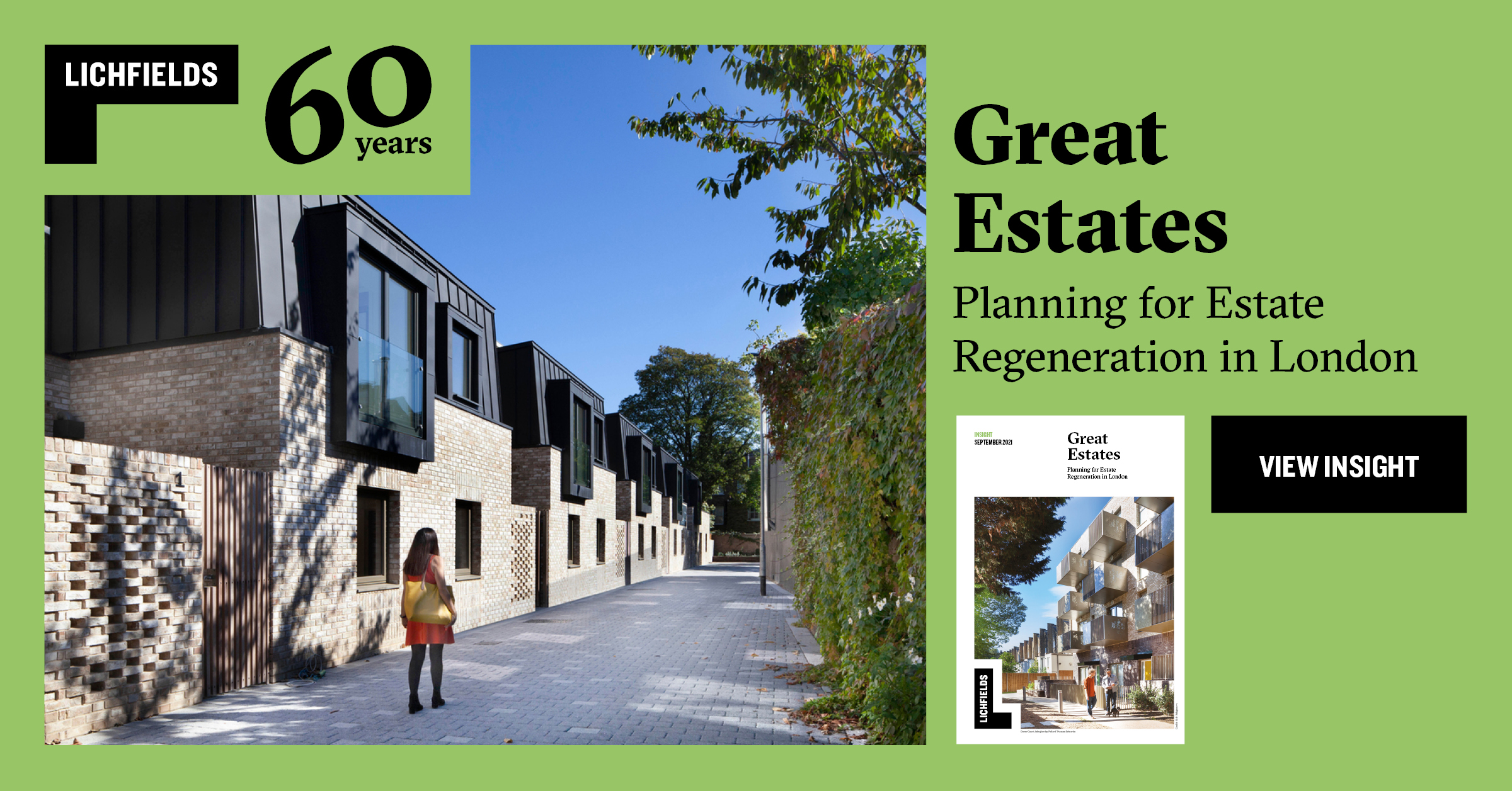It’s been a whole year since Natural England sent shockwaves through the housebuilding industry across England, including those 12 local authorities within the catchment of the River Tees, by increasing the number of catchments and authorities that are subject to its advice in respect of nutrient neutrality. Over that period, nutrient neutrality has been a hot topic in the North East with the advice of Natural England being that planning permission, including for reserved matters and where conditions still need to be discharged, cannot be legally granted for residential developments unless they are able to demonstrate nitrate or phosphate neutrality.
The Tees catchment is experiencing high housing pressure with more than 500 dwellings needed per annum. The HBF estimate that the delivery of 21,420 homes within the North East have been held up by the announcement last year. In the light of this level of need and the fact that the River Tees is only subject to Nitrogen problems (some other catchments have Phosphorous or both which require more land to mitigate), the catchment has been selected as the location to test the proposed credit system.
Natural England is set to launch its nutrient credit bank later this month and this blog examines the proposed application process and allocation system and what this means for development proposals that are currently being held up by nutrient neutrality.
How are credits established?
There are requirements in the Levelling Up and Regeneration Bill (LURB) for all waste water treatment works that serve a population of more than 2,000 in the affected catchment areas to be upgraded to the highest technically achievable limits by 2030. In the meantime, Natural England has identified temporary mitigation measures to bridge the gap until the new requirements are in placebetween now and 2030 (and continue post 2030 given that Natural England and Northumbrian Water believe that upgrades to treatment works will only negate two thirds of the need).
The topography and geography of the Tees catchment makes the reversion of arable land the most suitable temporary mitigation method and will generate the highest number of credits in the shortest time. This is followed by the creation of wetlands, although these can take three years to establish. So far, Natural England has been able to fallow enough agricultural land to generate 1,600 credits to be made available for mitigation within the Tees Valley catchment over the next 12 months.
What is the current position on occupancy rates?
The 12 local authorities that fall within the Tees catchment have commissioned an independent study into the occupancy rates that are to be used within the credit calculations. The report is expected to be published and made available before the end of March.
Whilst Darlington Borough Council have confirmed they will be using a figure of 0.8 residents per household, it is still to be confirmed as to the other 11 local authorities as each are dependent on their own demographic data. Figures are based on a calculation of net additional increase in the local population as a result of new development, as well as the declining size in the average household, and so the average occupancy rate used for credit calculations differing from the figure of 2.4 residents per household that is applied by Natural England in its nutrient calculator currently. This figure is based on the national average household assumption that all residents would be new to the area, even though Natural England has accepted that some people would move locally and would therefore not result in any additional nutrient impact within the defined catchment.
How will the credit bank system work?
Applications for credits will be open once a Quarter, with the first batch released at 9am on 31 March 2023. Guidance on what to include in the application will be released on 27 March via the gov.uk website in order for applicants to prepare the necessary information and calculations.
Initially, there will be 400 credits available in each batch with any that are not claimed rolling over to the next batch. Natural England is confident that more credits will be unlocked if the revenue is returned quickly to enable it to invest in more sites and make more credits available.
The process of applying will be online via the gov.uk website. If an application is successful, a 10% deposit will be immediately payable. Natural England will then issue a certificate that can be submitted with a planning application. The certificate will have a 36-week expiration date from being issued; Natural England believe that this will stop credit banking. Should planning permission not be granted after 36 weeks then the credits will be returned to the ‘credit bank’. However, it is expected that there may be some flex in this should there be any undue delays that are out of the applicant’s control, such as a deferred planning committee. Should planning permission be granted, then the balance of the payment for the credits will be due within 12 weeks of determination. The full certificate will then be issued which can be used to discharge any pre-occupancy conditions relating to nutrient neutrality.
It has been confirmed that the deposit will be refundable should the application get refused, however it is uncertain if this will happen if the certificate expires.
The credits will be allocated on a first come, first served basis through the application process. Whilst this will inevitably lead to some inconsistency it was determined that it was crucial to keep the process simple and this was the best approach to balance with fairness.
Applications will be divided into major (over 50 dwellings) and minor (fewer than 50 dwellings) applications (albeit the credits will be issued based on the size of the site rather than the applicant). In order to assist SME builders, the credits will be allocated over a 40:60 split, meaning there will be 160 credits available for major applications and 240 credits available for minor applications in the first batch. Any credits allocated for minor applications that are not allocated can be transferred for use by major applications. Natural England estimate that the first batch of credits for major applications will cover approximately 3 large developments (over 50 dwellings) across the Tees catchment.
Subsequent batches will be released every three months as follows:
Natural England confirmed that the price per credit would be £1,825. Using the occupancy rate of 0.8 that is to be applied by Darlington Council it is estimated by Natural England that an average of 1.14 credits will be required for each dwelling. It therefore estimates that the cost per dwelling will be around £2,100 (1.27% of the average house price in Darlington).
As it stands, the credit calculator does not anticipate the upgrading of water treatment works in 2030 as the LURB has not yet received royal assent. However, as soon as this takes place, the calculator will need to be updated to take this into consideration.
What does this mean for current and future applications?
Whilst this is a positive step towards achieving a solution for nutrient neutrality, it will create some uncertainty for developers as to the realistic timescales in which credits can be obtained via the nutrient credit bank. Applications are only open once a Quarter and the first come first served approach means that the majority of applications will miss out initially.
Natural England has chosen not to prioritise applications that have already been submitted and are ready to be determined (following a resolution on nutrient credits). This may hold up housing that can come forward for delivery now. Instead, they have taken the approach they have in order to offer a ‘fair’ opportunity for all applications.
There is also still uncertainty about applications that only need to mitigate for part of the site, where on-site mitigation can be provided for some of the site. For example, if a site of over 50 units applies for credits through Natural England it would be considered as a major application (where the demand for credits is greatest). However, on-site mitigation may negate the need for a portion of the site, leaving fewer than 50 units to be mitigated for through the credit bank. Although the application would only be requesting credits for less than 50 dwellings, the scale of the development would still be considered under a major application. Natural England suggest they would consider this on a case-by-case basis.
Natural England is keen for this initiative to be successful and is encouraging a high uptake in using its credit bank in order to unlock more revenue to further increase the supply of credits (thus lowering the demand and competitiveness). In time and as more land is unlocked, this will create stability and Natural England claim that their £30m investment has the potential to generate £80m which will be used to improve the offering. However, until this stability is established, and the backlog of applications starts to clear, it is likely that there will be an extremely high demand for an inadequate supply of credits.
Lichfields will be continuing to closely monitor the situation with nutrient neutrality and would be more than happy to assist with credit applications once the new credit bank has launched for the Tees catchment. Please get in touch if you have any queries or need any assistance with calculations or any advice on projects that may be caught up in this process.






